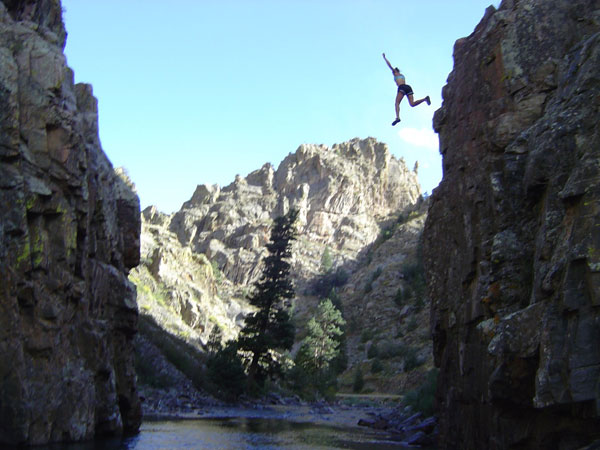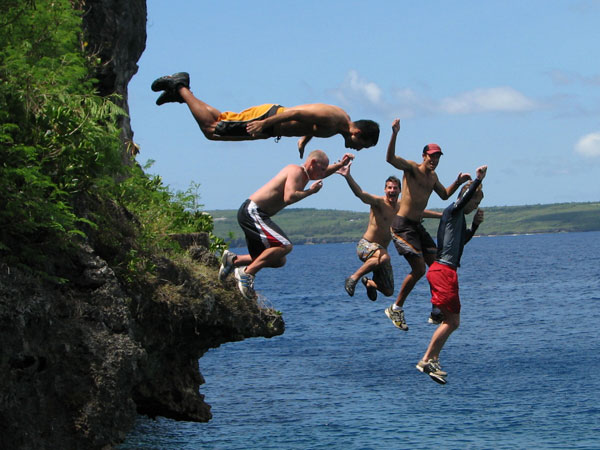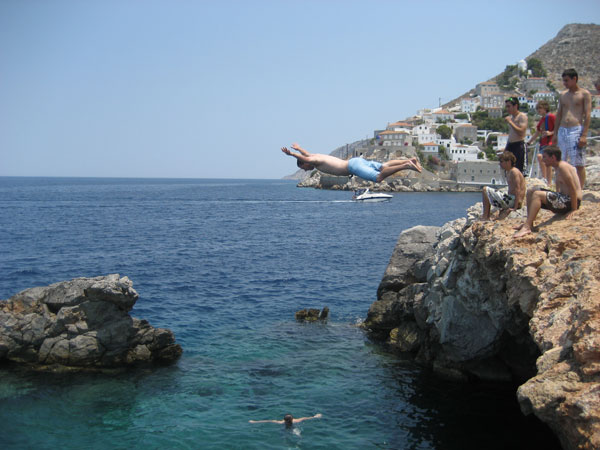
[WARNING: Please do not try this, unless you are very well prepared psychically! We get a lot of comments from people who hurt themselves while cliff jumping]
You’ve seen it in movies, you probably dream about it – so why not experience it? The thought of cliff jumping probably sounds like something that you could never do, but for others it is highly appealing. In this post we will present 10 tips on how to do a cliff jump without getting hurt, a list that can apply to cliff jumping beginners and second-level beginners (those that have already been through this once let’s say). Naturally, before you do this, you must already master the art of swimming!
[adsenseyu2]
These are just some general ideas that you should take into consideration. We also recommend that you get a serious training from someone with experience at first and if you are indeed a beginner, start with relatively small cliffs.
1. Don’t go cliff diving alone. Take your friends along, in case something goes wrong. Besides, this way things could be a lot more fun.
2. Make sure you wait for your friends to step out of the water before you decide to make the jump. This will make things easier for you to concentrate and will prevent hurting anyone.If you have a neoprene wetsuit bring it along. If you’re a beginner, bring your sneakers too.
3. Before doing a cliff jump, keep in mind that pressure can be a huge issue and take care of your ears by using a few drops of olive oil or silicone.

4. Check out how deep the water is. You can do that by engaging in a little research on that particular river or lake or simply ask someone that can help you with this information. If you happen to be out in the wild and are in a situation when you have to jump- this is a movie-like scenario, but you never know-, here’s an interesting solution you could try: find some natural vegetation that could be used as a rope, tie it together and then tie a rock at the end of it. This way, by throwing the rock in the water, you will know approximatively how deep it is. If it is less than 4 meters, then it is not safe, so you should search for alternatives. Also, be aware of the tides in the area. If you are a good swimmer, you can try twisting in order to escape the currents.

5. It is important to start safe. This involves a few things: first off, you must be confident, chickening out is not an option as it could really influence the way you dive. You need to be 100% lucid in order to control your body during the jump. Also, a steady starting place is necessarily in order to look around at first and calculate your jump at your own pace.
6. Make sure you have enough space and time to make your move by calculating the distance and visualize your jump in your head before take off. Start your jump by having your arms tight to the body in a straight position. This is the best way, don’t mind all the silly people in the photos : )

7. Jump feet first! It is said that most of the professional cliff divers (in fact, 98% ) dive in this manner, mainly because diving head first is very dangerous.
8. Learn to enjoy the time spent in the air. This may seem like a crazy advice, but it is a great sensation once you manage to relax. This will of course occur in time. Once your body is loose, you will have more control over it.
 9. When your body hits the water, it should have a tight and dynamic shape. Keep your toes stretched and arms very close to your body, so you could slide freely and easily.
9. When your body hits the water, it should have a tight and dynamic shape. Keep your toes stretched and arms very close to your body, so you could slide freely and easily.
10. As you start to come in contact with the water, remember to breathe out through your nose, not to let any water affect your breathing process.
In case you have experienced this semi-extreme sport and want to add some information or advice, feel free to leave a comment.


1 Comment
Pingback: Cliff diver drowns after jumping 125 feet into Lake of the Ozarks, Missouri cops say - In The News Today